
Frontiers of Soil: What Your Food Ate with Garden Futurists David Montgomery and Anne Biklé
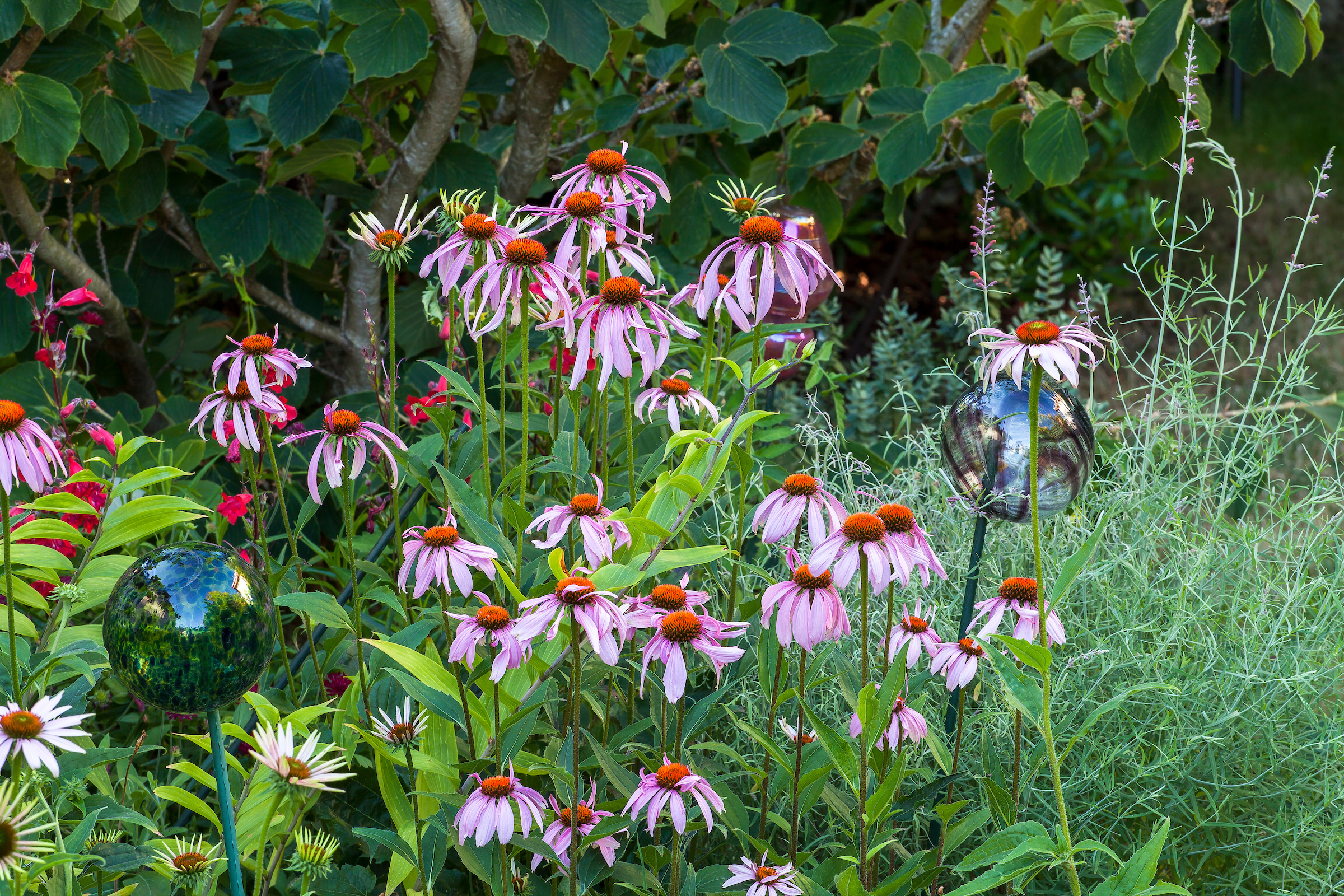
Contributor
Fall 2022
Listen to the Podcast Here.
Guests David Montgomery and Anne Biklé talk with Garden Futurist about how they have used soil science, history, and storytelling to explore the interconnections between farming practices, how soil health affects the health of crops, how the health of crops influences the health of livestock, and how all of these things affect human health.
David Montgomery is a professor at University of Washington, a MacArthur Fellow, and an authority on geomorphology and Anne Biklé is a biologist and environmental planner. They are known for previous books such as The Hidden Half of Nature and for a new book What Your Food Ate.
This episode was sponsored by: Bartlett Tree Experts
Sarah Beck: You’re listening to Garden Futurist. I’m Sarah Beck. We have a great topic today, so close to U.S. Thanksgiving. For instance, I’m so thankful to have my co-producer, Adrienne St. Clair, with me.
Adrienne St. Clair: I’m really grateful to be here.
Sarah Beck: There’s actually a really strong food component in today’s episode and it’s really much more than that. I feel like, as always, we see threads of ideas running through a lot of our conversations.
Adrienne St. Clair: Yeah, it’s been interesting to see how these topics have this consistent thread throughout them. We talked to Martin Breed about how our microbiome connects to plants and health. And he was talking about the aerobiome, right? The microbes in the air.
Sarah Beck: That was amazing.
Adrienne St. Clair: And that also connected to the immune system. We also talked to Judy BlueHorse Skelton about the Indigenous communities and their history with and present-day tending of the land.
This conversation brings those two things together to discuss how landscape stewardship is so dependent on the stewardship of soil and how that’s deeply connected with human nutrition and health.
Sarah Beck: Our guests are David Montgomery and Anne Biklé. David Montgomery is a professor at the University of Washington, a MacArthur Fellow, and an authority on geomorphology. Anne Biklé is a biologist and environmental planner. They happen to be married to each other. They’re known for previous books, such as Biklé and this new book, What Your Food Ate.
Adrienne, before I forget, there’s actually a word that Anne and David seem to use a lot. It’s the word exudate. In the context of soil, what are they talking about?
Adrienne St. Clair: Yeah, in reference to plants, exudates are chemicals that are released from their roots, and they help break up the nutrients that are found there.
Sarah Beck: I wanted to make a few comments and I really hope that I don’t embarrass myself, because I really feel like I have to gush about your book, How to Heal Our Land and Reclaim Our Health.
This was a really ambitious book. Just looking at the scope, I was just so impressed by your science communication. I was just absolutely blown away by your treatment of a lot of what I think are very difficult subjects to explain.
As a plant nerd, I have taken soil science several times and I think it’s been really intimidating for me. I’m just so impressed by how you handled this subject and the fact that as excited as I get about plants, I got as excited about thinking about soil.
You touch on plant health, you touch on animal health and human health. I mean, it’s all connected. I’m just wondering, as you were developing the outline and the story of how this book was going to be put together, did you realize you were going to be covering so much ground? Sorry for the pun.

David Montgomery: Kind of, but not totally.
We knew at the start of writing What Your Food Ate that we were going to be looking at the connections between soil health and human health, because that’s what we really wanted to wrestle with in this book, as sort of the follow-up to the previous books. We ended up going down paths that we hadn’t anticipated, learning things we hadn’t thought we would learn.
We ended up with a macro-outline where we were looking at how farming practices affect soil health, and how soil health affects the health of crops, and how the health of crops influences the health of livestock, and how the health of the soil crops and livestock influence roll up to influence human health.
So we divided the book into sections on each to make it, in a way, bite-size pieces of science and history and storytelling, but that has a thread that links it all together to go from the soil health to human health.
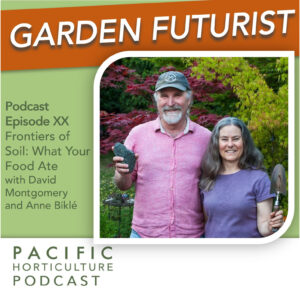
Sarah Beck: I really would like to start with the plant side of things because I was very enamored with this particular analogy that you shared, and I kept thinking back to it, because you described how humans get help digesting their food from the gut biome.
This has been a really popular subject for a while. At least, I’ve followed this a lot because I think it’s super interesting and you describe how plants do their digestion, being outside of their bodies in the soil. So I was hoping you could explain this a little bit further because I thought that was a really good analogy for me to grasp onto.
Anne Biklé: We know—at least the broad outline, some of us in way more detail—how our digestive system works. The food comes in and you’ve got this milieu of enzymes and microbes and all of that. And then, we’re alive and we’re thriving with their help. And when you really think about the soil and plants, of course they don’t have teeth and digestive enzymes and all of that stuff, so they’ve got to get some help.
It’s always interesting to look back into the early evolution of any organism. So the first land plants, right, they weren’t these big, flowery, floppy-leaved things. They were these puny little aquatic things, little stick-like things, crawling out of the water. Not physically, but you know what I mean.
They land on land, it’s like, “Wow, you need some help here.” So that was when soil microbial communities were sitting there. And plants have long produced exudates, and so the microbes are onto the exudates, and then the plants are onto what the microbes can provide. So there’s organic matter in the soil that, without the microbes, plants are not going to be able to utilize any of that.
So if you think about the soil and where the stomach is and all of that, it’s not some far-flung reaches away from the root system of a plant. The roots are kind of this, I don’t know, hybrid stomach and absorptive thing. Because from the standpoint of the stomach, they’re recruiting all of these microbes really close to the roots. Without the microbes doing a lot of these things, the plants are not going to be having a very good digestive experience, let’s just say.
Sarah Beck: I love also that you had this analogy about pollinator-plant relationships, and how these mutually beneficial relationships are so complex, and they’re really similar. Do you feel like this is a field that is really just at a cutting edge now? It sounds like there’s so much more to know.
David Montgomery: Yeah, we’ve barely scratched the surface, really. What’s interesting about thinking about the symbiotic relationships between plants and their partners in the soil, the bacteria and fungi, is that it’s a different lens than many of us are accustomed to thinking about nature through, where a lot of us are immersed in thinking about competition as the way that nature works. And that is a very important evolutionary force between individuals and species, but it’s not the only force.
The impact of symbiosis on things that we can see in a garden like pollinators and flowers, that we can get because we can see it with our senses. People have studied it, we’ve seen the interactions. There’s other examples of mutually beneficial relationships in biology, even if we’ve emphasized competition for 150 years in the way we frame things. But in the world, the out-of-sight world below our feet—what Anne and I have called the hidden half of nature—that is underground where we can’t see it readily and microscopic, the microbial world where we don’t even know it’s there without scientific instruments. It makes it that much harder to understand relationships between species.
So we’re kind of at this point, I think, in understanding soil ecology and soil life, that the above-ground world of biology was like in the early- to mid-19th century. Just understanding, “Who are the players?” without totally understanding what game they’re playing, or how they impact each other.
You pick up a random sample of soil and you deliver it to a soil biology lab, and they’ll be able to identify maybe half the species of microbes in it. Maybe half. What’s that other half doing? We don’t really know, but there’s been enough documented examples of mutually beneficial symbiotic relationships, or commensal ones that are just neutral, where they’re not really affecting each other, but that microbes in the soil could be taking up space that might otherwise be occupied by pathogens. So that when we change the communities of life in the soil, which we do through our gardening or agricultural practices at a home or a farm, we’re scrambling some of those relationships. That has, we think, had an impact on other things that we might care about, like what gets into our food in the context of agriculture.
There’s lessons I think in thinking about how caring, for creating a pollinator garden, to care for those organisms that we know have mutually beneficial relationships with the things we might be more interested in, like the plants, for example, since I’m married to someone with a lot of plant lust.
So if we start thinking about soil in a similar way, of “how do we care for, how do we cultivate the beneficial life in the soil,” it gives us a completely different lens on understanding, what it is we ought to be doing to the soil to support our objectives, whether it’s to grow more food or to grow a beautiful garden, or to support an orchard, whatever.
Sarah Beck: So in terms of this newfound knowledge, it seems also somewhat tragic that we’re just now realizing we’re losing some mineral content in our available food supply, especially compared to even a couple generations ago.
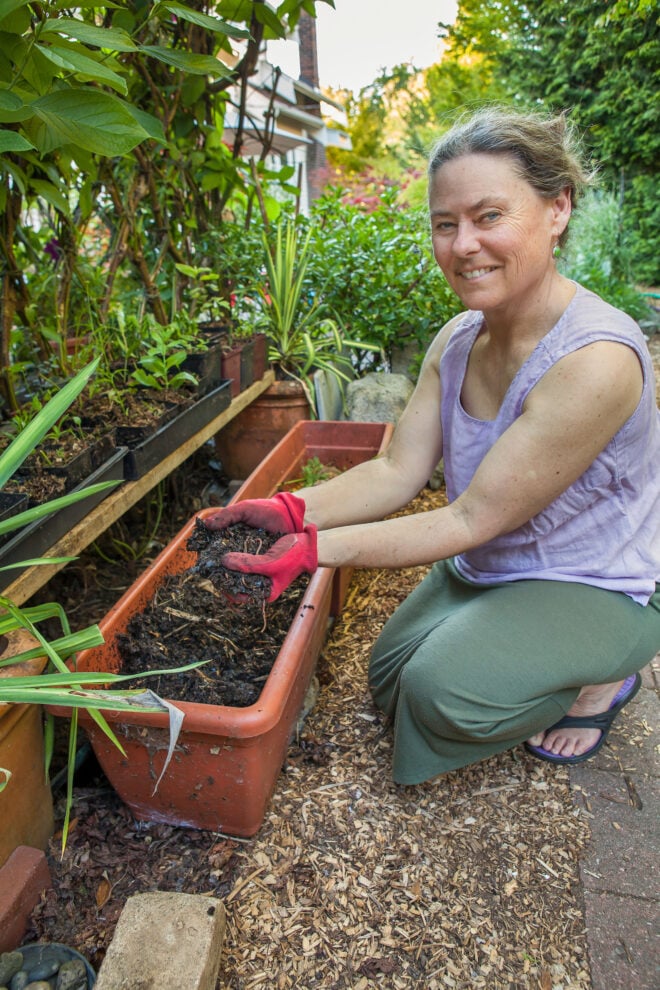
Anne Biklé: Yeah, it’s a huge concern. It’s too bad we don’t have a much closer connection between our nutrition world and our agricultural world, because you look in agronomy journals and it’s all about yield, yield, yield, and the effects of this input or that input. Nutritionists, of course, are not that concerned about—I mean, I’m sure there are many out there who are concerned about the way that our food is grown, but it’s hard to see that reflected in nutrition science and so forth.
The reason it’s such a problem is that when you look at micronutrients. So these micronutrients are, it’s either a vitamin or it’s a mineral element. We’re familiar with many of them, like iron and zinc are really common. Zinc is involved in something like over 200 enzymatic reactions that support all these different things going on in our body.
Sarah Beck: I think this has been the story of agriculture and, obviously, the last century, this drive to get more out of an individual plant, and pushing the plant yields. It is an interesting question, and maybe this is oversimplification, but can you talk just briefly about how this idea of not trying to get such a high yield, is it really as simple as that? As saying, “If I’m going to grow a plant that isn’t necessarily bred for the highest possible yield, it may be gleaning more of those nutrients and minerals from that particular patch of soil?”
David Montgomery: Yeah there’s a couple elements to that. The one very well-documented reason for the declining mineral abundance in many crops is what’s called the dilution effect.
That is where if you think about, say you take a knife full of peanut butter out of the fridge, and you’re going to either spread it on a little cracker and pile it up really high, or you’re going to spread it on a large piece of bread and just like dust the thing thinly, and then take a bite out of either one of those. Which one are you getting more peanut butter in? It’s off the little cracker. So you could think of that as an analogy for nutrient density.
So if you have a plant, a wheat plant, for example, and it takes up a certain amount of iron from the soil, but you’ve bred the plant to produce twice as many seeds as its neighboring plant, if they both take the same amount of iron from the soil and the one distributes it to twice as many seeds, that plant’s going to have half the nutrient density in terms of iron.
And that phenomenon is pretty well established in agronomic circles as an influence as to why some mineral micronutrients have declined in certain crops that were bred for performance, for high yield. Now is that a necessary trade-off? Do we have to trade off quality for quantity?
And the short answer is, we don’t think so. What we’ve done is we’ve bred crops for high yields in high nitrogen environments, with a lot of nitrogen fertilizer. We didn’t simultaneously select for genes that would increase, say, the zinc or the iron uptake. So we selected for one thing, yield, and we neglected the other.
It’s not so much that it’s an inherent trade-off, because it turns out that there’s different genes, different pathways, that can affect mineral uptake in plants. And we just didn’t select for the ones that would enhance that at the same time that we were selecting for high yields.
So there’s an inadvertent overlooking of that, but there’s also a connection with agricultural practices in terms of how we treat the land and mineral uptake by plants and the mycorrhizal fungi. What happens if you are tilling a soil regularly? Well, you’re cutting up their fungal hyphae, their rootlike structures that were the pathways that they used to deliver minerals they’d prospected from the soil to their plant partners. And so if you disrupt that, you’re breaking the transportation system that was helping to supply micronutrients.
And the third piece of this is plants have two different gene pathways. Many crops have two gene pathways for taking up micronutrients from the soil. When a plant is grown in a nitrogen-rich environment, it tends to turn off the pathways that would recruit microbial partners. It turns down the exudate faucet. Why? Because it’s in nitrogen. They’re getting all this go juice for growth, and so they put their energy into growth and they’re not investing as much in their root system and their microbial partners. And so they get a lower return of micronutrients.
Sarah Beck: To jump into some of the areas of solutions, and I’m so excited to hear you talk about the potential for breeding some of these positive functions back in. But you also talk about other, I think, more practical, just hands-on regenerative farming methods. I think in the book you describe it as a plow is like a bomb going off in the soil as far as affecting the health of the microbes and everything that’s living there.
Can you talk just a little bit about what the no-till option might be? I remember years ago there was a no-till movement that was using a lot of herbicides and that sort of thing. You obviously have some examples that are not that.
David Montgomery: Yeah. When you look at the recipe for cultivating beneficial life in the soil, it boils down to a couple key things: don’t disturb them, feed them and give them partners to play with, which translates into no-till or minimizing disturbance, planting cover crops so that there’s an organic matter that’s being returned to the soil—you’re not exporting all the organic matter offsite to sell somewhere—and that you’re growing a diversity of crops. Why? Because that produces a diversity of exudates, which recruits a diversity of microbes, which gives a wide repertoire to soil life to be able to adapt and to interact with whatever plants are growing there now.
Interest in no-till really started as a way to minimize soil erosion. Because if you have a bare, freshly plowed field and it rains on it, you can watch the brown stream of mud runoff in real time, and that’s basically fertility going downstream at a pace that a farmer shouldn’t want. The development of genetically modified Roundup Ready crops allowed farmers to basically spray an herbicide, glyphosate, on their fields as weed control, and that gave them a good way to go no-till. Because why did farmers no-till historically? It’s great weed control and you want your crops growing, not weeds.
A lot of farmers viewed that as the easy button in terms of weed control. Now it had other downsides in terms of scrambling communities of soil life and introducing an herbicide into our food supply and those kinds of things.
When you look at the recipe for cultivating beneficial life, and think about it as minimizing physical and chemical disturbance, then the glyphosate-rich no-till doesn’t cut it because that’s just trading off chemical disturbance for physical disturbance.
I think that the best way to think about it is really to strategize as a farmer about how—and this works for gardeners too, I think—how to minimize the chemical and physical disturbance of the soil. So it’s not necessarily eliminating both, like if you’re going to grow carrots, how are you going to not get disturb the soil and still get the carrot out of the ground? You’ve got to do some disturbance, but that doesn’t mean you have to plow the seed bed to prepare it and plow it afterward and continually disrupt the soil life. It means you really stick with the minimizing end of things.
That’s essentially where it comes through. It’s essentially trying to minimize the disruption so you can maximize the ecological benefit of the communities that are there.
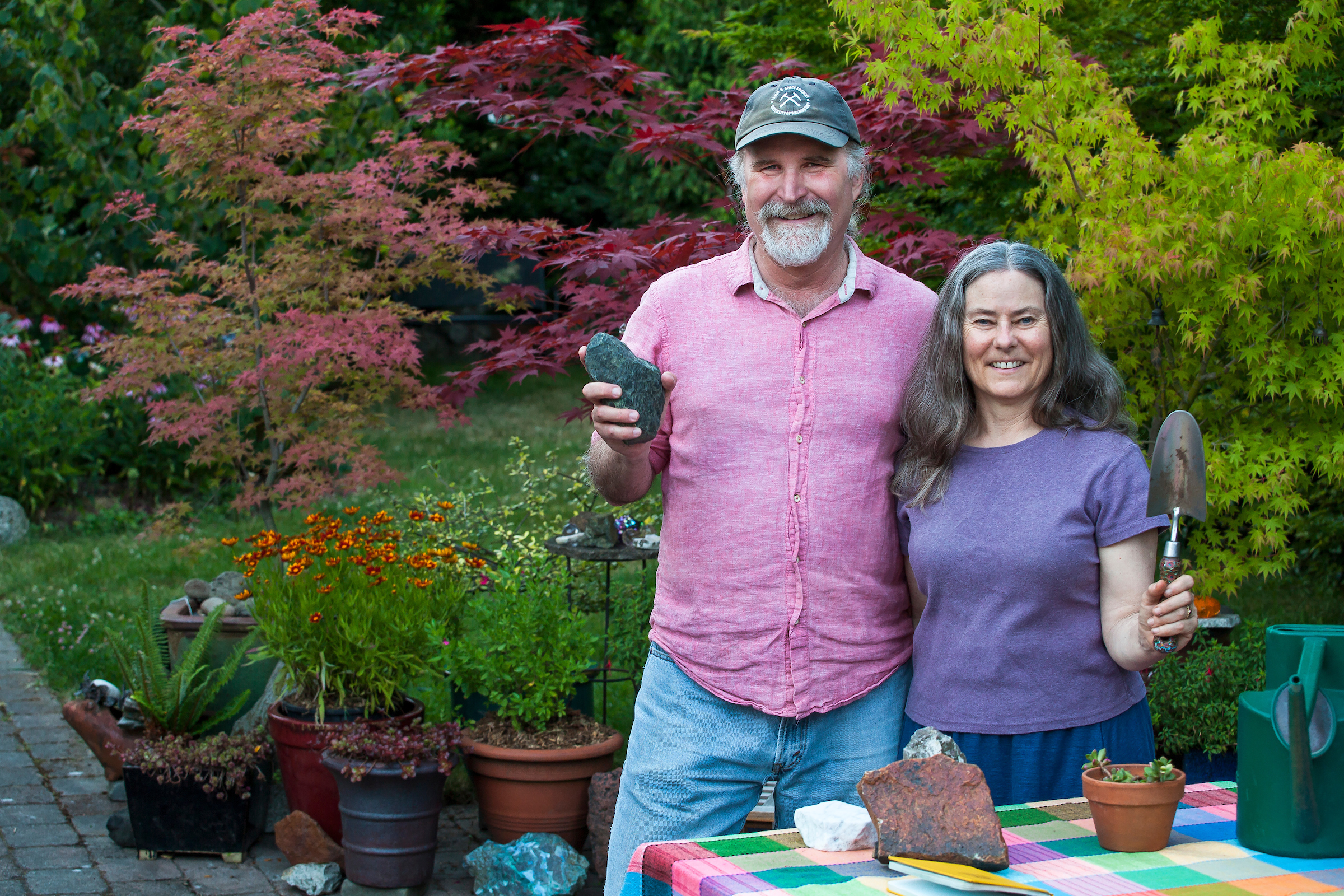
Sarah Beck: I’m so glad you mentioned the gardener, because I did wonder if there were some takeaways here. I mean, you mentioned all of these large-scale applicable methods, like cover crops and rotation and not disturbing the soil as much as possible without tilling. Yeah. Are there some other things that a gardener can think about, in terms of these large-scale ideas and bring those back to the scale of your ornamental, vegetable, small-garden space?
Anne Biklé: Absolutely. Everything that we talk about in the book that farmers are doing to improve and maintain soil health, a gardener can absolutely do, as well.
I don’t know what it is about our human brains and our monkey digits and stuff like that, but we just want to always dig in the soil. I think part of it is just this innate curiosity, like “What’s down there, anyway?” Even though we can’t see most of it. For some reason, we think if we keep, as a gardener anyway, we keep digging, we’ll see different things.
In an ornamental garden, you need to get the plant in the ground. And especially if you’re dealing with like, a five- 10-, or 20-gallon potted plant, it involves some digging, right?
So that’s where, use the shovel to get the plant in the ground. But after that, you need not rely on the shovel so much because all of these same things that Dave was talking about, that farmers who routinely till, they’re slicing up fungi, they’re smashing bacteria, they’re dicing up all kinds of soil life, and these are some of the tiniest creatures on earth. So it really behooves us to think about their size and their vulnerability to harm and death through our practices.
I like to think about an ornamental garden because I see the different species, and a tree versus a perennial and all of that. What goes on in my mind is, wow, what kind of exudates are going, flowing out of that plant? So that’s where you get your diversity, right? You get all of these different kinds of plants.
Groundcovers are yet another thing. You’ve got groundcovers down, or you’ve got mulch mixes down that are pretty thick. We want stuff that can absorb and store and pass along moisture. So I want either groundcovers or diverse mulches for your cover-up. And then again, just, I already hit on the grow diversity thing. I’m sure every gardener can figure out a way to cram another plant into a space. I know that I can. That’s really what we ought to be thinking about with our gardens.
Sarah Beck: You say that phytochemicals are key to soil health and human health. I’m curious if you could explain what those are and what they do for humans?
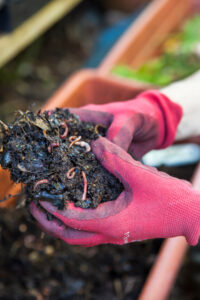
Anne Biklé: I like phytochemicals because to me, this means, “Oh that’s right. These are the chemicals the botanical world produces and they are supposed to be producing them. And they do this huge number of defensive and protective and communication things for plants. Between plants, between plants and their microbiome.”
The phytochemicals that then are a part of plant foods in the human diet, beta-carotene, this whole huge world of polyphenols. The wine people can’t stop talking about resveratrol. The vegetable people can’t stop talking about beta-carotene, on and on it goes. So there are tens of thousands of compounds that are phytochemicals, just the chemicals that plants are supposed to be producing.
And to me, what’s so interesting, in part, about them is that when they come into the human body, they also serve protective and defensive functions. So they go from being an ecosystem service thing to becoming a human health thing. And we are obviously, in many ways, really different than plants, and yet these phytochemicals are interacting with our genes and with our cells in ways that really, just to simplify it down, in ways that keep our cells and tissues functioning, so we don’t succumb to pathogens, we don’t succumb to oxidation and disordered inflammatory processes. They really are just absolutely vital to keeping ourselves and tissues just functioning normally.
Sarah Beck: I really would love, if we have time, to talk to you at least briefly about livestock, because you do spend a good amount of time in this book talking about cattle, in particular, and dairy cows.
I just actually came back from an event that we held at Gabilan Ranch, which is, a ranch that’s in San Juan Bautista, California, where they’re doing quite a bit of research. There’s a research project, and it is a regenerative cattle-ranching operation. I got to see in real life some of the long-term research that’s been going on around this.
I’d love for you to talk a little bit about this proposal that nutritional quality of milk and meat can be improved and that reducing the environmental footprint of animal agriculture can be done. So how is it that we just need to be raising animals and feeding animals in order to really do this?
Anne Biklé: Why it’s so important what animals eat, and especially ruminants, is that these are not just any old herbivore. They really are specialized, and I’ll return to the digestive system.
Sarah Beck: Oh, I hope you do, because it’s amazing.
Anne Biklé: You hear about the four-chambered stomach and that drives me crazy because it’s like, no, no, no. Wait a minute. They have one stomach and then they have these other parts.
And the ruminant digestive system, on the whole, really oriented toward the way that these animals obtain nutrition. A huge part of that takes place in the very front end, a place called the rumen, and this is the heart of a cow’s microbiome. It’s really somewhat akin to say it’s sort of this really dynamic everchanging compost heap situation that is going on in the very front end of this digestive tract.
There’s a whole world of microbes in a cow’s rumen and they’re able to break down cellulose because the cow genome does not have the genes that break this stuff down. So the cow’s getting a couple key things out of this whole arrangement in its rumen. One thing is that the microbes are turning the cellulose into energy, and then cow biology takes that energy and it builds muscle tissue and it turns it into milk.
And then the other thing that’s really important about what we feed cows has to do with the fat balance. So what we know about these highly specialized herbivores is they do best on a diet where plants are living as they get eaten and that there’s a diversity of plants and this, in turn, relates to phytochemical diversity.
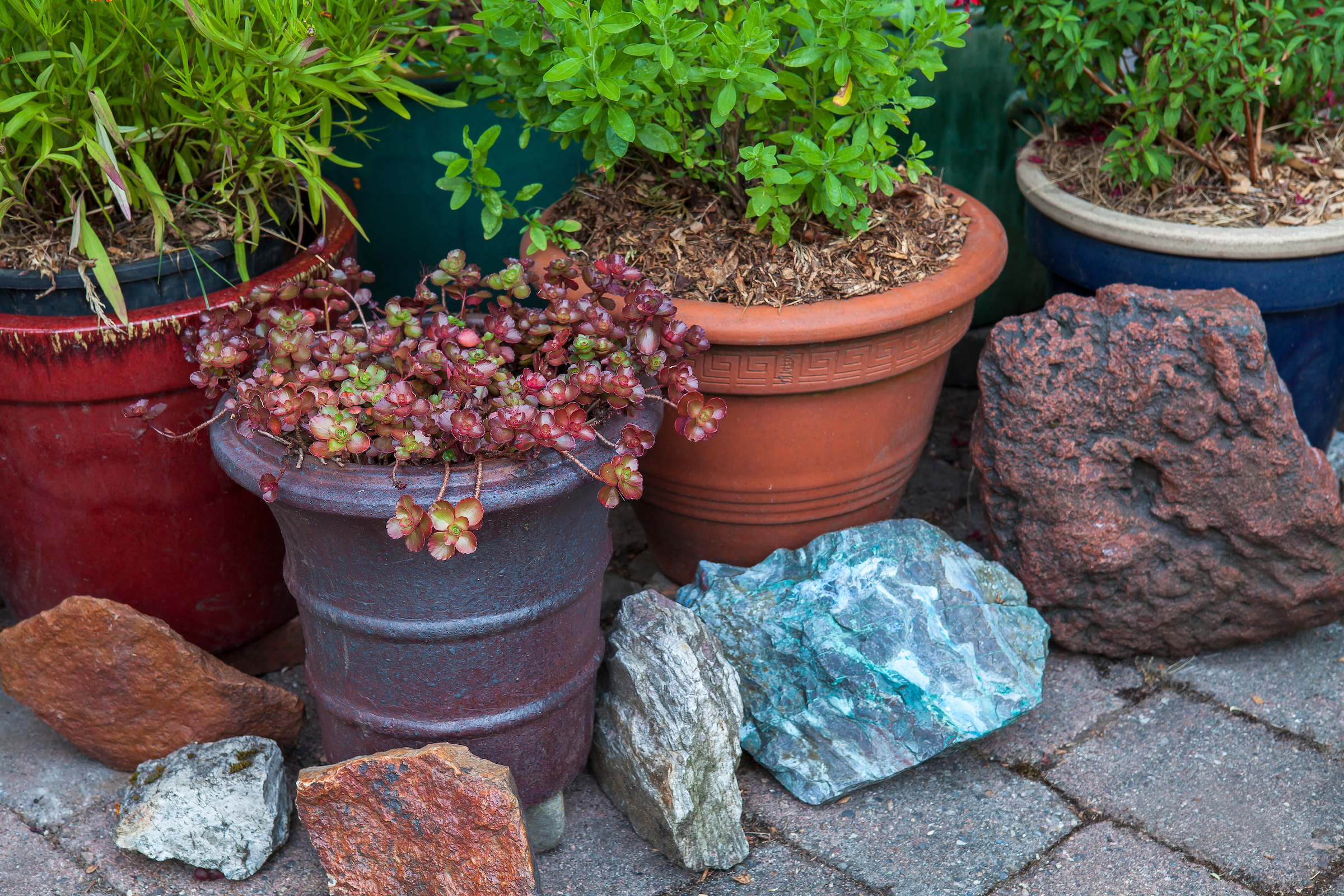
And you want leafy and living because these leafy living plants are photosynthesizing. And a big part of photosynthesis in plants has to do with omega-3 fats. This is a kind of fat that’s really important for human health that’s really plummeted in the human diet. And so when you’re eating what’s called, colloquially, a grass-fed—I don’t really like that term because it just implies a monoculture of grass and that’s not what we’re really talking about. We want animals out in a pasture where there’s a diversity of plants. These are herbivores. They know how to pick and choose plants, and if they’re taking in too much of one kind of phytochemical that might have a bit of toxicity, they balance that out and they move away from that plant and they eat something else.
All the while, they’re pulling in omega-3s that transfer through to meat and milk. So this is why diversity of plants, living plants and the leafy part, because the leafy part is where photosynthesis is occurring. So you’re getting all of these fats that come into the meat as well as the milk.
This is such a huge, important point for human health because of how we have just really scuttled the omega-6 to the omega-3 balance in our meat and in our dairy.
There’s another fat in ruminants, in cows, in particular. It’s called conjugated linoleic acid. Basically, how do these animals need to be raised? They need to be raised outside, living plants, in a diversity of plants. And that’s why everything that happens in a feedlot is, pretty wretched for a ruminant. They’re eating seeds instead of leafy living things.
David Montgomery: The reason that that really matters is that seeds are very rich in omega-6 fats and those omega-3 and omega-6 fats have very different effects in the human body that relate very much to how our immune system works and how inflammation is both initiated and quelled.
And you want a balance, as much of a balance as you can get between the two. So if you’re eating a diet that is rich in things whose diet was rich in omega-6s than omega-3s, then your body’s getting an overdose of omega-6s, relative to omega-3s as well, and that doesn’t help you quell inflammation.
Anne Biklé: Yeah, and I think just one last thing here is about, well, how does healthy soil relate? Because it’s easy to see how healthy soil relates to crop health, right? Stuff is moving directly out of soil into the plant body, but healthy soil in the animal context, this is why you want healthy soil.
This is how you’re going to get a diversity of plants, high enough levels of organic matter that you’re getting sufficient plant growth, and you’re getting the microbial modulation and the microbial action that you also need to make all of these nutrients available. In the cases where microbes are semi-processing some of these things, you want that as well.
So part of the subtitle of the book, How to Heal Our Land and Reclaim Our Health, this is where ruminants can play, I think, a really significant role, provided that you have a person who is not just looking for yield on the hoof, we’re looking for maintaining, and in many cases, improving the functions of the land where those ruminants are grazing.
So that’s the “heal our land” part and if we can heal the land, we can reclaim our health.
David Montgomery: The key message of What Your Food Ate is really that if we look questions about the environmental impact of agriculture or the human health impacts of agriculture, we really should be looking at what it is our food ate as the sources of that, and tracing that all the way back to the soil.
If you can think of a plant as having a diet in terms of what it gets from the soil, that works. If you think of a soil as having a diet, it’s the way farmers on a farm treat their soil. You can think of the soil having a diet. Maybe stretching the definition of the word diet a little bit, but the concept kind of works.
If you think about the connections between each of them, and it’s what we try and do in the book, is walk through the science and the history behind it of how those connections actually work and why it really makes sense. To be arguing about agriculture today or you’re thinking about what to eat today, it’s not just about what you eat. It’s not just about what we’re growing, it’s also about how we’re doing it. What our food ate.
Sarah Beck: I wasn’t so surprised, honestly, to hear some of David and Anne’s advice for the gardener. I think if you grow vegetables in an annual way in some of your garden beds, you’re already probably thinking about crop rotation, you’re thinking about cover crops and not disturbing the soil so much. But I have to say, I have a really new perspective on the soil biology itself and just what is under there.
Adrienne St. Clair: Yeah, the effect of actually digging, and how that interacts with the hyphae and the soil microbes. Any chance that we get to have some insight into what is happening under the top layer of soil is fascinating to me. I’m always surprised by what I don’t know about soil. I don’t think I’ll see making a hole in my garden in the same way again.
Sarah Beck: Oh, me, neither. You always hear people talking about, “Oh, we know more about space than we know about the ocean,” right? And it’s like, “You’re standing on soil and you don’t even know what’s going on an inch under.”
Adrienne St. Clair: Exactly. I really like that they really made the case that reducing the environmental footprint of animal agriculture can be done and, in fact, would have this huge benefit to human health, as well.
Sarah Beck: Also, what’s interesting is that even though we’re a long way from universally adopting a lot of these practices around raising animals and feeding animals in ways that support the healthiest soil and the healthiest people, we’re getting at least a pretty good idea of what that would look like, and what that could look like.
So, Adrienne, we often have meals that are “farm to table” or “farm to fork.” But I want to wish you a great Thanksgiving meal that is a “soil microbes to fork.”
Adrienne St. Clair: Enjoy eating what your food ate.
Sarah Beck: Thanks.
What your Food Ate, David R. Montgomery, Anne Biklé, W. W. Norton & Company, June 2022
The Hidden Half of Nature, David R. Montgomery, Anne Biklé, W. W. Norton & Company, November 2016
Share:
Social Media
Garden Futurist Podcast
Most Popular
Videos
Topics
Related Posts

Ground Up Science for Greener Cities with Garden Futurist Dr. Alessandro Ossola
Spring 2023 Listen to the Podcast here. Alessandro Ossola is a scientist who gets very excited about the challenge of climate change allowing for an

Readying Urban Forests for Climate Realities with Garden Futurist Dr. Greg McPherson
Winter 2023 Listen to the Podcast here. “Going from the mow and blow to a more horticulturally knowledgeable approach to maintaining the landscape. And that

What Climate is This? Part Two – A Garden Futurist Special
Winter 2022 Listen to the Part 2 Podcast here. If you live in the Pacific region, you know that seasons in your garden look different
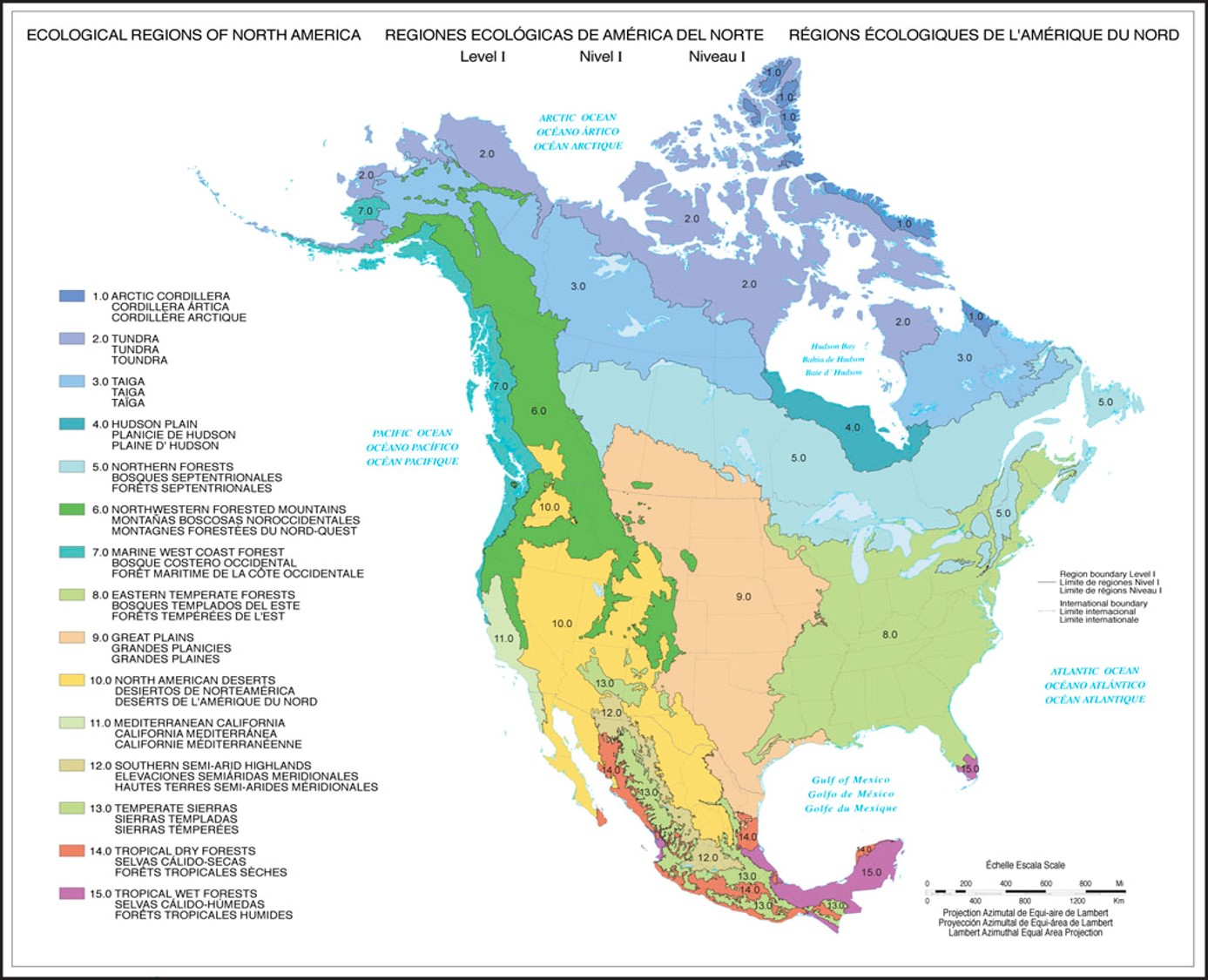
What Climate is This? Part One – A Garden Futurist Special
Winter 2022 Listen to the Podcast here. If you live in the Pacific region, you know that seasons in your garden look different from the


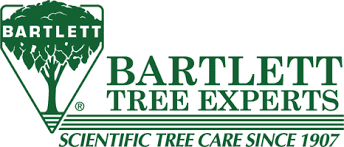








Responses